![]()
Cihan Altay’s Rotator typeface presents the digits 0-9 whether it’s right side up or upside down.
So this equation:
![]()
… can be inverted to make this one:
![]()
Both are valid.
(Thanks, Lorenzo.)
![]()
Cihan Altay’s Rotator typeface presents the digits 0-9 whether it’s right side up or upside down.
So this equation:
![]()
… can be inverted to make this one:
![]()
Both are valid.
(Thanks, Lorenzo.)
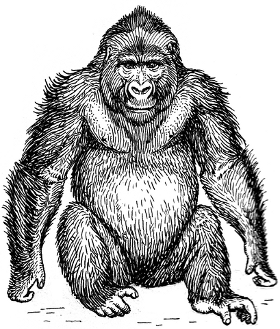
In 1993 Jacques Jouet wrote a love poem in the language of the great apes in the Tarzan novels of Edgar Rice Burroughs:
Zor hoden tanda
Kagoda bolgani
Rak gom tand-panda
Yato kalan mangani
Kreegh-ah yel greeh-ah
Kreegh-ah zu-vo bolgani
Greeh-ah tand-popo
Ubor zee kalan mangani.
Where are you going, gorilla,
In the dark forest?
You run without a sound
Seeking the female ape.
Beware of love
Watch out, gorilla
A lover dies of hunger
Of thirst, of hoping for the leg of the female great ape.
“The great-ape language has the peculiarity of being composed of a lexicon of less than 300 words,” Jouet notes. “In the absence of any information, it must be deemed that the syntax is according to the user’s preference, as are the pronunciation and prosody.”
(From Raymond Queneau’s Oulipo Laboratory, 1995.)
nudiustertian
adj. of the day before yesterday
ereyesterday
adv. on the day before yesterday
yestreen
n. yesterday evening
yester-afternoon
adv. yesterday afternoon
yesternoon
n. yesterday at noon
pridian
adj. of or relating to the previous day
yestern
adj. of yesterday
hesternal
adj. of yesterday
yesternight
adv. last night
hodiernal
adj. of or belonging to the present day
overmorrow
adv. on the day after tomorrow
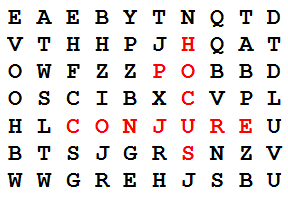
If π is expressed in base 26, then each of its digits can be associated with a letter of the alphabet (0=A, 1=B, … 25=Z). This produces an endless string of letters:
D.DRSQLOLYRTRODNLHNQTGKUDQGTUIRXNEQBCKBSZIVQQVGDMELM …
If the digits of π are truly random, then this string “emulates the mythical army of typing monkeys spewing out random letters,” writes Mike Keith. “Among other things, this implies that any text, no matter how long, should eventually appear in the base-26 digits of π.”
In examining the first million letters, Keith has found that the word CONJURE appears at position 246,556. If a carriage return is added after each 2,736 letters, then we have a two-dimensional field in which further words appear, in the style of a word search. Now HOCUS and POCUS appear, intersecting CONJURE (with POCUS in the shape of an L).
When each row is 14,061 digits long, then ALPHA, OMEGA, and GOD appear in a group near position 148,655. And when rows are 13,771 digits long, then DEMON and SATAN appear interlocked near position 255,717. Keith even found the makings of a charming haiku near position 554,766 when rows are 1,058 letters long:
Sun, elk in water;
Oho! For her I’ll try to
Be a hero yet.
More here. See also A Hidden Message and Equidistant Letter Sequences.
vespine
adj. pertaining to wasps
vespiary
n. a nest of wasps
Lord Dunsany and John Drinkwater were appearing as guests of honor at the Poetry Society of America when they fell into a friendly dispute over the relative merits of rhymed verse and rhythmical prose. Dunsany asked, “Supposing you had a line of rhymed verse ending with the word wasp. Where, I ask you, could you find a rhyme for wasp?”
In the words of the Boston Transcript‘s Alice Lawton, “That was the evening’s Parthian shot. Mr. Drinkwater produced no rhyme for ‘wasp.'”
But Arthur Guiterman, who was in the audience, later recalled, “You can find a rhyme for wasp. There is a perfectly good one in the dictionary. I found it at home that night. It is knosp and means a flower bud, or a budlike architectural ornament. Of course, having found it, I had to use it at once.”
I saw a Melancholy Wasp
Upon a Purple Clover Knosp,
Who wept, “The Poets do me Wrong,
Excluding me from Noble Song —
Though Pure am I and Wholly Crimeless —
Because, they say, my Name is Rhymeless!
Oh, had I but been born a Bee,
With Heaps of Words to Rhyme with me,
I should not want for Panegyrics
In Sonnets, Epics, Odes and Lyrics!
Will no one free me from the Curse
That bars my Race from Lofty Verse?”
“My Friend, that Little Thing I’ll care for
At once,” said I — and that is wherefore
So tenderly I set that Wasp
Upon a Purple Clover Knosp.
The Strand set itself a novel challenge in 1897 — to create a complete alphabet using human figures. It engaged an acrobatic trio known as the Three Delevines and set to work in a studio in Plymouth:
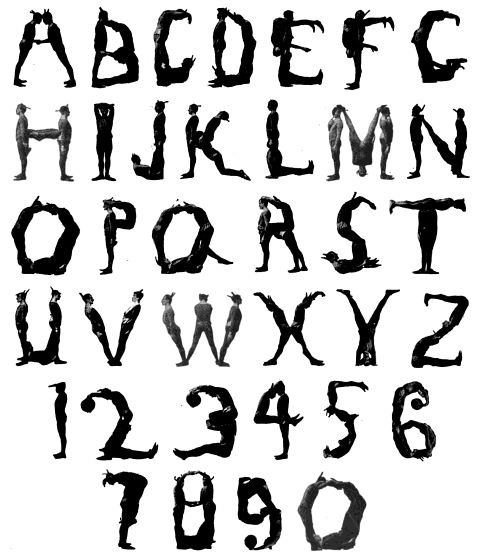
“We would venture to say that each and every one of these letters and figures will well repay careful individual study. Each one had first of all to be thought out and designed, then built up in a way which satisfied the author, and finally ‘snapped’ by our artist, for the slightest movement of a head or limb altered the physiognomy of a letter in a surprising way.”
“When the human components had so grouped themselves that the result really looked, even ‘in the flesh,’ like the letter it was supposed to represent, then the author gave the word ‘Go,’ and immediately afterwards, with a sigh of relief, the Three Delevines ‘stood at ease,’ wondering how on earth the next on the list was going to be formed. Neither time nor trouble was spared in the preparation of this most unique of alphabets. Observe that, while we might have inverted the M to form a W, we did not do so; and we think everyone will agree that the last-named letter was well worthy of being designed separately.”
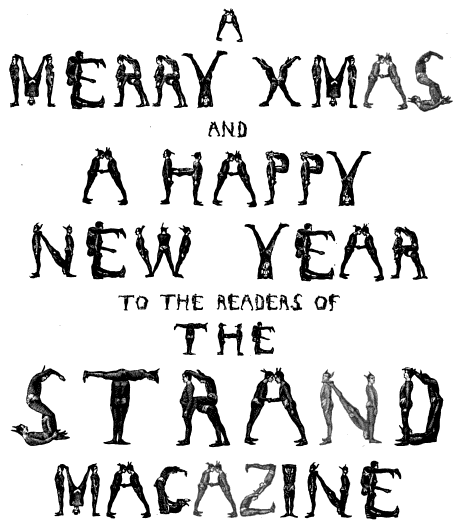
“Perhaps some enterprising publisher would like to publish a whole novel in ‘living’ type. Such a work might, or might not, command a huge sale; but, at least, there can be no two opinions about the human interest of the work.”
On Christmas Day 1877, assailed by two young ladies with “nothing to do,” Lewis Carroll invented a new “form of verbal torture”: Presented with two words of the same length, the solver must convert one to the other by changing a single letter at a time, with each step producing a valid English word. For example, HEAD can be converted to TAIL in five steps:
HEAD
HEAL
TEAL
TELL
TALL
TAIL
Carroll called the new pastime Doublets and published it in Vanity Fair, which hailed it as “so entirely novel and withal so interesting, that … the Doublets may be expected to become an occupation to the full as amusing as the guessing of the Double Acrostics has already proved.”
In some puzzles the number of steps is specified. In Nabokov’s Pale Fire, the narrator describes a friend who was addicted to “word golf.” “He would interrupt the flow of a prismatic conversation to indulge in this particular pastime, and naturally it would have been boorish of me to refuse playing with him. Some of my records are: HATE-LOVE in three, LASS-MALE in four, and LIVE-DEAD in five (with LEND in the middle).” I’ve been able to solve the first two of these fairly easily, but not the last.
But even without such a constraint, some transformations require a surprising number of steps. Carroll found that 10 were required to turn BLUE into PINK, and in 1968 wordplay expert Dmitri Borgmann declared himself unable to convert ABOVE into BELOW at all.
In a computer study of 5,757 five-letter English words, Donald Knuth found that most could be connected to one another, but 671 could not. One of these, fittingly, was ALOOF. In the wider English language, what proportion of words are “aloof,” words that cannot be connected to any of their fellows? Is ALOOF itself one of these?
In 1917 Sam Loyd and Thomas Edison made this short, which plays with similar ideas. The goat at the end was animated by Willis O’Brien, who would bring King Kong to life 16 years later:

pilcrow
n. the paragraph sign
In 1938, University of North Carolina folklorist Arthur Palmer Hudson published a collection of unusual African-American names, most gathered through personal interviews but others “unimpeachably attested” by state bureaus of vital statistics:
In the 1850s, a Stanly County, N.C., slave was named Sunday May Ninth “to guarantee the bearer’s remembrance of his birthday.” “This name proved useful to the ex-slave in establishing his status with reference to a monetary claim.”
Hudson seems to have been enchanted by unusual names generally — among the UNC alumni he found a white student named Shively Dewilder Accus Baccus Dulcido.
(Arthur Palmer Hudson, “Some Curious Negro Names,” Southern Folklore Quarterly 2:4, December 1938, pp. 179-193.)
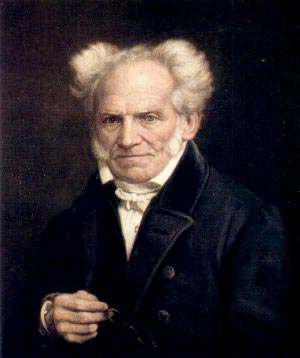
Arthur Schopenhauer was so ill-tempered that he once assaulted an elderly seamstress for talking outside his door.
A court ordered him to pay her 15 thalers every quarter for the rest of her life.
When she finally passed away 20 years later, he wrote in his account book Obit anus, abit onus — Latin for “The old woman dies, the burden is lifted.”